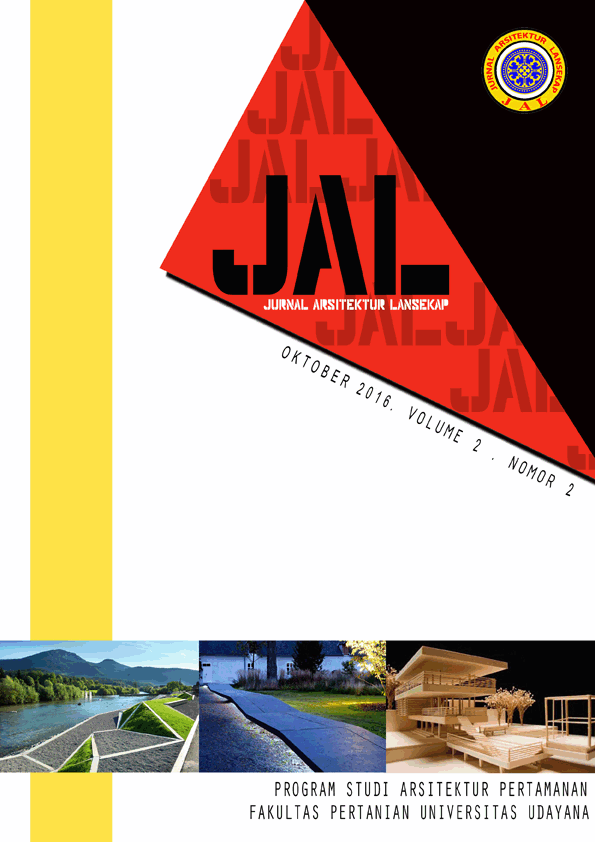Pendekatan Fisik dan Ekologis Penggunaan Pohon Asam Jawa Sebagai Tanaman Tepi Jalan di Sekeliling Trotoar Lapangan Puputan Badung, Denpasar
Abstract
ABSTRACT
Physical and Ecological Approaches to Using Tamarinds as Street Trees around the Sidewalk in Puputan Badung Parks, Denpasar
Many streetscapes in Indonesia cities used tamarinds (Tamarindus indica L.) tress as soft scape elements and Denpasar city is also one of them. This paper is concerned with the use of tamarinds species in street trees, especially it uses around the Puputan Badung sidewalks. The objectives of this paper were to identify the positive impact of tamarinds physically and ecologically on the environment. A survey methods was employed to obtain information about the existing trees. Descriptive methods was used to analyze trees character physically and ecologically and also its suitability based on literature study. Study results showed that there were sixteen individuals of tamarinds found along the sidewalk in Puputan Badung parks. The trees distributed as many as four individuals on northern and southern part, six individuals on eastern part, and two individuals on western part of the park. Some physical characteristic of the trees have been identified, i.e. vase canopy shape to provide tree canopy cover and avoid sun glare effect, fine plant texture to expand space impression, and slow stem growth. In addition, trees ecological characteristics recognized for controlling air pollutants (15N and Pb) and also providing wildlife habitat for lac insects (Laccifer lacca) as well as providing nectar for honeybees. It is suggested that, given the contribution of tamarind trees to the environment, more and more of them should be planted as street tress, and to maintain it, the requirements of planting the trees should be taken into account.
Downloads
An author who publishes in the Jurnal Arsitektur Lansekap (JAL) agrees to the following terms:
- Author retains the copyright and grants the journal the right of first publication of the work simultaneously licensed under the Creative Commons Attribution-ShareAlike 4.0 License that allows others to share the work with an acknowledgement of the work's authorship and initial publication in this journal
- Author is able to enter into separate, additional contractual arrangements for the non-exclusive distribution of the journal's published version of the work (e.g., post it to an institutional repository or publish it in a book) with the acknowledgement of its initial publication in this journal.
- Author is permitted and encouraged to post his/her work online (e.g., in institutional repositories or on their website) prior to and during the submission process, as it can lead to productive exchanges, as well as earlier and greater citation of the published work (See The Effect of Open Access).
Read more about the Creative Commons Attribution-ShareAlike 4.0 Licence here: https://creativecommons.org/licenses/by-sa/4.0/.







